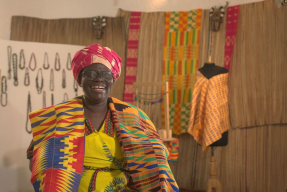
I am not exactly sure how the “department” (like one of our states) of Totonicapan fared during the so called“civil war” in Guatemala during the 1980’s and 1990’s when it is estimated over 200,000 indigenous people were murdered by the government. Entire villages and all their inhabitants were destroyed during this time of genocide in Guatemala. (It is not a subject I have felt comfortable broaching……yet). BUT, I can tell you that this department seems fiercely independent, cohesive and not easily intimidated. In my two weeks here, I have become familiar with two examples of the independent, yet cooperative, spirit of the citizens of Totonicapan.
Example One-The Water
There are over forty communities in Totonicapan and each one is responsible for their own water. That means that the community must find a source for water for their residents and deliver it to them. This is not done by the government.
So, in the example of Nimasac (the community where I am living), the “elders” got together and worked with the adult men in the village to find a means to deliver water, reliably, from their source—which is a mountain spring located about a 3 hour walk from Nimasac, high in the mountains. The community layed the pipe, built the holding tanks and built the “water stations” located conveniently throughout the village. This, of course, took place over a number of years. This same scenario was repeated across dozens of villages in Toto.
Enter the Guatemalan government. After all the villages had developed their own water delivery systems, the government gave notice that it was going to take control of the water AND that, instead of being free, villagers would have to pay for it.
Well, you can imagine how this went over—after the villagers had invested hours, hard work and hard earned money to develop their own water systems. In fact, the father of the family with whom I am living is currently a member of a group of 8 men who, each and every Sunday for an entire year, go to the water source and make sure that it is cleared of debris and that everything is functioning. This is a rotating, one year long, responsibility shared by the adult men in the village.
In January of 2009 all of the villages of Totonicapan decided to protest the government’s action by calling for all adult men in the villages to converge upon “cuatro caminos” (four roads). Which they did, by the thousands! Cuatro caminos is where the four main highways connecting this part of Guatemala to the rest of the state converge. The protestors completely shut down all four highways……for an entire day! They also issued a warning to the government that, if they continued in their efforts to take over the water systems, the villagers would take the protest to Guatemala City. Apparently, at least for now, the government has backed off and the villagers continue to manage their own water systems.
Example Two-The Catholic Church
Okay, the details on this one are a bit sketchy as when this family gets passionate about something they talk in k’iche, and I do not understand a word. But, here is what I understand after a couple of conversations in Spanish with various members of the family.
This family is deeply religious. I can see no evidence of any continued existence of Mayan spiritual beliefs here…….Catholicism definitely permeates their lives. Night time activities, meetings and mass seem to consume the bulk of what little free time they have. Seems some one is constantly coming and going to various religious activities—every day of the week.
Mass here is not free. People must pay 10Q to attend mass or 25Q if you are married. (In fact, one of the daughters tonight told a story of a priest who said he would not say mass unless there were at least 300Q collected!) Seems that the church is always asking for money to pay for various activities and religious celebrations. The church has been growing significantly. It brings in a lot of money every single week. The church desperately needs repairs and needs to be expanded……but, the priests claim “there is no money” for repairs.
However,there is plenty of money for the priests to have cars, to have fancy clothes, to take trips, to entertain friends. This fact has not been lost on those who attend the church in Nimasac.
And, the people of Nimasac are not happy.There are petitions circulating, boycotts of mass being organized, letters being written. In fact today, one of the daughters came back from mass to report that where there were usually over 100 people in attendance, today there were only 30. All the talk centers around the power the villagers/church supporters have if they all speak as one. The idea that the church will have “no choice” but to listen to them.
Community organizing here seems to be ingrained in the culture. They have a history and tradition of working together—to better themselves and to fight the common enemy. This is consistent with what I have read of the current Mayan culture. What I don’t know is whether this spirit of cooperation and speaking with one, strong voice has intensified as a result of the atrocities experienced by the indigenous Mayans at the turn of the last century. Is this is an example of “never again” or is this how they’ve always been?
/>













